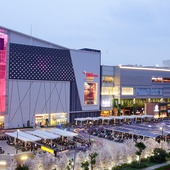Shopping for Local Crafts in Vietnam - Everything You Want To Know
When someone brings home Vietnam handicrafts as travel gifts for family and friends, they are not merely carrying souvenirs; they are carrying a piece of Vietnam’s soul in their backpack.
Through thousands of years of creation and improvement, local handicrafts have been preserved and have become significant elements of Vietnam's cultural heritage. From conical hats to exquisite ceramics, these beautifully crafted items reflect the country's traditional aspects. Craftsmen dedicate countless hours, pouring their heart and soul into every intricate detail.
With all the aesthetic and cultural values they embody, discovering the best places for handicrafts in Vietnam is an experience you shouldn't miss. If you are new to this journey, here is some updated information and shopping experiences you may find helpful.
Dong Ho Folk Paintings
This genre of traditional painting attracts both Vietnamese and international art lovers with its simplicity, vibrant themes, and heartfelt reflections of local life. Each painting is a glimpse into rural life, capturing hopes for good fortune and happiness through rustic themes such as traditional proverbs and popular stories.
The idyllic charm of Vietnam's villages is vividly portrayed in Dong Ho paintings, which are traditionally used as unique decorations during the Tet holidays (Vietnamese Lunar New Year) alongside peach blossoms.
What makes Dong Ho Folk Paintings distinctive is the elaborate process of making the paper and mixing the colors prior to printing. The special paper is crafted from the bark of the Do tree. After undergoing a complex manufacturing process, it is coated with Ho Diep before it is ready for use in the paintings. Dong Ho paintings are renowned for their bright colors, all produced from natural materials; artisans use ingredients such as beet for red, turmeric for yellow, charcoal for black, and tea for green. These colors are meticulously mixed and applied to wooden molds before being printed onto the paper.
Where to buy:
- Take about 20 minutes to drive from downtown Hanoi to Dong Ho village in Thuan Thanh district, Bac Ninh province, to explore traditional painting and acquire vivid Dong Ho paintings as gifts.
- If you can't make it to Bac Ninh, paintings can also be found at various handicraft shops along Nguyen Thai Hoc street and in the Old Quarter of Hanoi.
Do Paper
Do Paper is more than just a sheet of paper; it embodies a story of cultural preservation and traditional craftsmanship. This thick, fabric-like paper is uniquely Vietnamese and is produced by a few villages in Northern Vietnam, particularly known for its use in Dong Ho Folk paintings.
Do paper (or poonah paper) is created from the bark of Do trees, which are grown and harvested by artisans in the North who pass down the paper-making techniques through generations. The process is labor-intensive, taking up to 100 meticulous steps and about one month before the handmade paper is ready for use. Notebooks, sketchbooks, and calendars made of Do paper are meaningful gifts for anyone who appreciates craftsmanship.
Where to buy:
- If you're exploring the northern mountainous region of Vietnam, consider taking a Do Paper tour that takes you to a traditional Do paper village in Hoa Binh province, where you can create your own paper from scratch.
- If you prefer convenience, you can purchase calendars, sketchbooks, and notebooks made from Do paper at Collective Memory, Craft Link, or other souvenir shops along Hang Gai and Hang Bac streets in Hanoi's Old Quarter.
Lacquerware
The art of lacquerware (Son Mai) involves the intricate decoration and painting of objects, thought to have originated in China over two millennia ago. The lacquer, derived from the resin of lacquer trees, is mixed with colored pigments and solvents, then layered meticulously onto the object’s surface.
As it hardens upon exposure to air, it creates a durable, moisture-proof surface. Sometimes additional materials like eggshell and gold leaf are embedded beneath the lacquer, revealing intricate designs once sanded down. The high quality of resin from Vietnamese lacquer trees, particularly in Phu Tho province, contributed to the rapid development and reputation of this art form.
Lacquerware is integral to daily life across Vietnam, found in homes and restaurants alike. It serves both functional and decorative purposes, with artisans creating beautiful lacquer pieces that carry the cultural essence of Vietnam. These artistic items make exceptional gifts for close family members or friends.
Where to buy:
- Located 17 km south of downtown Hanoi, Ha Thai is one of the oldest lacquerware villages where you can shop for exquisite Vietnamese lacquer items.
- In Hanoi, if traveling to the village isn’t feasible, you can find lacquerware at several shops in the Old Quarter, including:
+ Marena Hanoi at 28 Nha Chung, Hang Trong, Hanoi Old Quarter
+ Anh Duy Lacquer at 25 Hang Trong, Hanoi Old Quarter
+ Minh Tam at 2 Hang Bong, Hanoi Old Quarter
- In Ho Chi Minh City, besides the Ben Thanh Market, numerous shops selling lacquerware can be found along popular streets like Pham Ngu Lao and Dong Khoi.
Local Silk Products
Renowned for their quality, Vietnamese silk products are soft, lightweight, durable, and made from 100% natural fibers. The various types include sturdy Lismore bud silk and satin silk.
While silk garments and products are popular nationwide, the authentic handmade creations from ancient craft villages remain unmatched. Ha Dong Silk from Van Phuc village is particularly famous for producing top-quality silk in Northern Vietnam, boasting a history of over 1,200 years.
Artisans from Van Phuc are known for intricate weaving patterns, with silk traditionally reserved for royalty and nobility. Their signature Van Silk is prized for its temperature-regulating properties, keeping wearers cool in summer and warm in winter.
Heading south, Duy Xuyen village in Hoi An, which has existed for 300 years, also offers a wide selection of high-quality silk products.
Where to buy:
- Visit Van Phuc village in Ha Dong district to learn about this traditional fabric and purchase items for your family and friends.
- Silk products can also be found at boutiques around Hang Gai, Hoan Kiem in Hanoi.
- Travelers in the south can explore Duy Xuyen village in Hoi An for various types of silk at public markets or local tailor shops, providing a chance to observe the silk-making process.
- Other historic silk villages include Tan Chau Village in An Giang province and Nha Xa in Ha Nam province.
Traditional Pottery
Humble yet elegant, Vietnamese pottery has been celebrated for centuries. What distinguishes Vietnamese ceramics is their high-quality glaze and a rich palette of colors, including blue, brown, white, and green. Artisans employ modern techniques and creative designs to produce unique pottery items.
Bat Trang ceramics, categorized into household items, worshipping items, and decorative pieces, are sought after not just within Vietnam but also exported to countries like Japan, Thailand, and South Korea. Visitors can peruse these ceramics at local markets, often witnessing artisans producing them fresh from their family kilns.
Where to buy:
- In Bat Trang village, explore various ceramic stores along the village roads, and don't miss the Bat Trang Porcelain and Pottery Market, where you can create pottery items yourself. Many young visitors and tourists enjoy the hands-on experience of making unique gifts.
- If you visit central Vietnam, the Bau Truc pottery-making village, one of the oldest in Southeast Asia, is worth checking out, with around 85% of the local population making a living through traditional pottery.
- In Hoi An, visit Reaching Out to purchase beautiful ceramics and tea cups made by disabled artisans.
Non La (Palm-leaf Conical Hat)
Along with the Ao Dai, the Non La is an iconic symbol of Vietnamese women's traditional attire. Images of Vietnamese men and women wearing these hats while working in rice paddies and other outdoor activities have become familiar to many travelers.
If you’re interested in this unique item, the Chuong conical hat-making village is a great place to explore. Located west of Hanoi, generations have committed themselves to preserving the craft of making these traditional hats. While numerous souvenir shops sell Non La, the quality from Chuong village is standout.
A variety of materials come together to create a Non La: artisan use palm leaves from Quang Binh province, silk thread from Trieu Khuc village, and bamboo from Hoa Binh province, making this hat a practical souvenir for shade from sun or rain.
Where to buy:
- Learn how to make a Non La and purchase them at Chuong ancient village in Phuong Trung commune, Thanh Oai district, Hanoi.
- Visitors can also find palm-leaf conical hats in souvenir shops at Dong Xuan Market in Hanoi or Ben Thanh Market in Ho Chi Minh City.
Ethnic Brocade
As a cultural emblem of the ethnic minorities in Northwest Vietnam, brocade plays a vital role in the daily lives of these communities. Thousands of manually woven products—scarves, bags, clothing, and textiles—are rich in culture and tradition. The brocade weaving traditions involve multiple stages, passed down through generations of skilled women in these families. Each ethnic group has unique products that represent their distinct identity and pride.
Where to buy:
- Vibrant brocade items, complete with fringes and pompoms, are widely available in local ethnic markets throughout the mountainous regions of Northwest Vietnam.
- If a trip to the mountains isn't possible, you can browse ethnic minority products at the Craft Link store located at 43 & 51 Van Mieu, Dong Da, Hanoi.

Shopping Clothes in Vietnam - Everything You Need To Know
Vietnam used to be just a shopping paradise for travelers on a shoes string. Today the fashion world has broadened extensively to cater to just any need, from the most basic purchase to world-class brands.

The Must-Read Guide About Buying Books In Vietnam
More than a simple sightseeing or adventurous destination for expats and long-term travelers, thanks to its own unique reading culture, Vietnam is gradually becoming a great place for bookworms to start their first backpack trip to Southeast Asia without interrupting their reading indulgence.

Vietnam: General Shopping Tips
Welcome to Vietnam, the new paradise for shopping. If you look at the surface, you will be disappointed by the large number of made-in-China items in just any cities. If you dare to search, you will be caught in a complete surprise.








